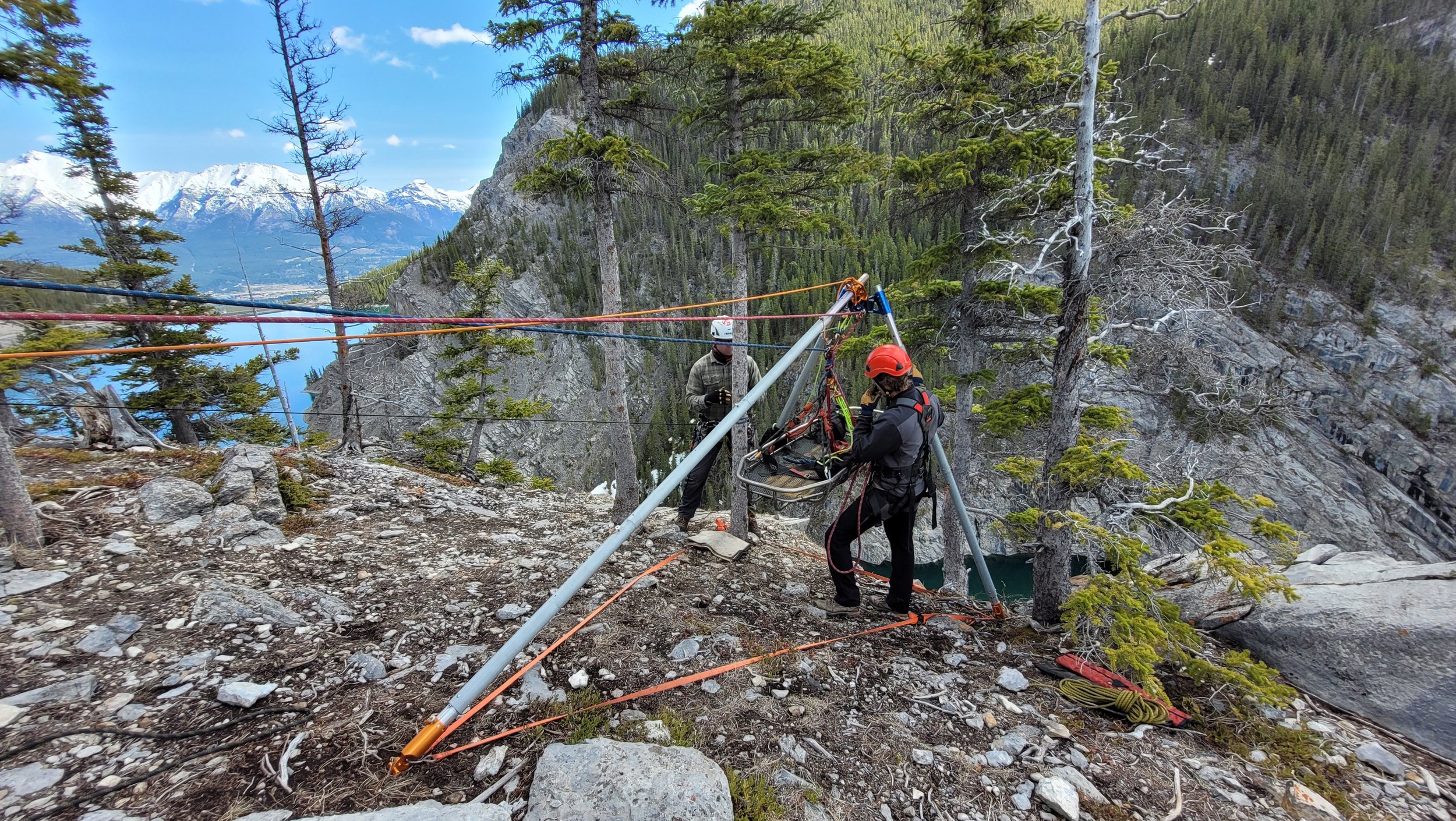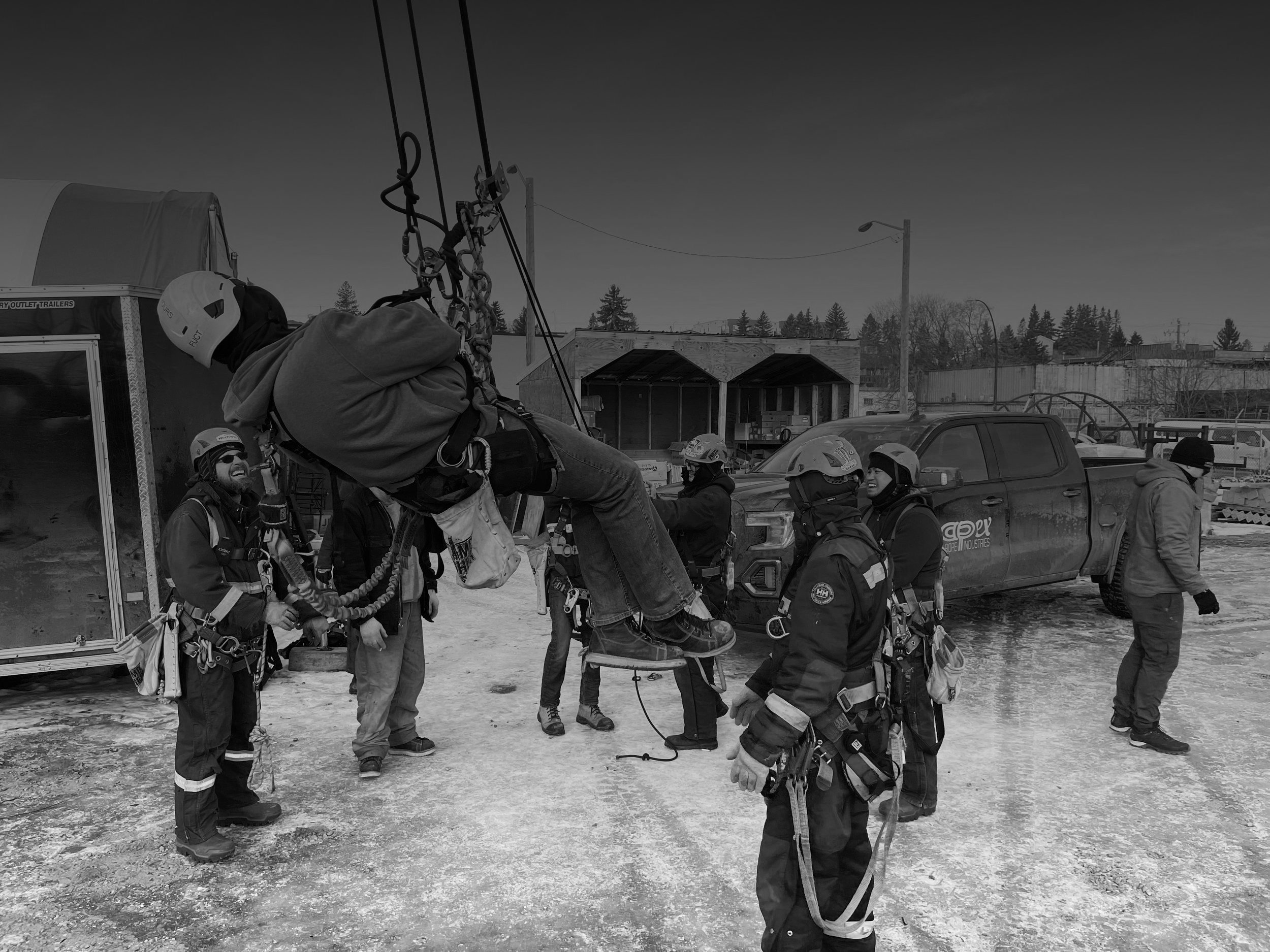
NFPA Rope Rescue Training
NFPA ROPE RESCUE TRAINING IN CALGARY
Lorem ipsum dolor sit amet, consectetur adipiscing elit. Sed aliquet magna dui, id mattis purus dapibus quis. Morbi mauris libero, sollicitudin sed mollis eu, lacinia ac elit. Nulla accumsan vehicula eros vel tincidunt. Curabitur sit amet risus nec ligula ultrices egestas in sed justo. Quisque a lobortis nisl. Praesent viverra elit porttitor est sagittis vehicula.
NFPA Rope Rescue Operator Equivalency
Are you looking to develop the introductory skills needed for technical rope rescue operations? Our NFPA Rope Rescue Operator Training is designed to equip you with the knowledge and hands-on experience to safely perform rope rescues in challenging environments.
NFPA Rope Rescue Technician Equivalency
For more advanced students, we offer NFPA Rope Rescue Technician Training, building on the operator level skills to tackle complex rescues in high-angle and confined space scenarios. Prerequisite: Successful completion of the Operator level training is required for enrollment in the Technician training or proof of a comparable course that is approved by our training department.
UPCOMING TRAINING EVENTS
Please use the button below to view and book available from our available training dates.

TRAINING FAQs
-
(National Fire Protection Association)
In 1895, a committee on automatic sprinkler protection was formed in Massachusetts by individuals affiliated with several fire insurance companies and a pipe manufacturers to develop a uniform standard for the design and installation of fire sprinkler systems.
The next year, the committee published its initial report on a uniform standard, and went on to form the NFPA in late 1896.
In 1904, the NFPA began to expand its membership from affiliates of fire insurance companies to many other organizations and individuals.
-
Starting in the 1940s the use of safety harnesses versus body belts offered a better option of fall protection equipment.
Manufacturers were inspired by similar equipment worn by military paratroopers. Advancements of materials and design continued throughout the 1990s when the full-body harnesses became standard personal fall protection equipment.
The advent of the dorsal D-ring system provided ease of wear and allowed more effective weight distribution.
Design alterations such as adjustable and padded style harnesses provided a more comfortable wear. Employees became more likely to wear fall protection harnesses as it no longer hindered productivity at this time.
-
Configuration Hazards
Examples: slippery surfaces, narrow passages, long traverses, low ceilings, small openings, vertical drops, slopes, bulkheads.
Biological Hazards
Examples: infectious agents, fungi, sharp objects, molds, stray animals, sewage, stagnant water.
Physical Hazards
Examples: electricity, drowning, fluid, air pressure, vibration, radiation, temperature extremes, engulfment, noise.
Atmospheric Hazards
Examples: explosive dust, gases, oxygen enrichment, vapours, Silica, oxygen deficient, welding fumes, exhaust.



